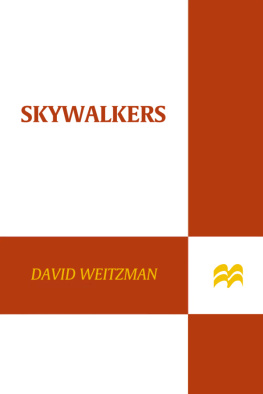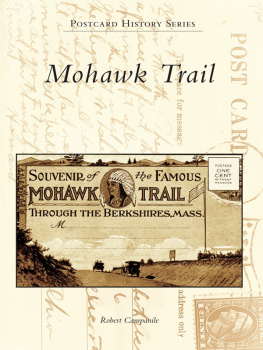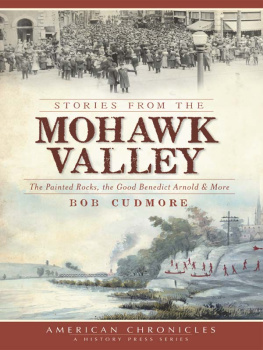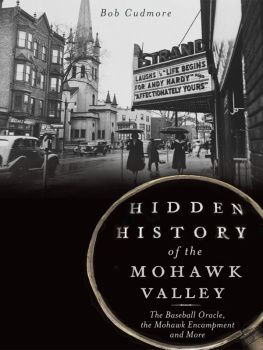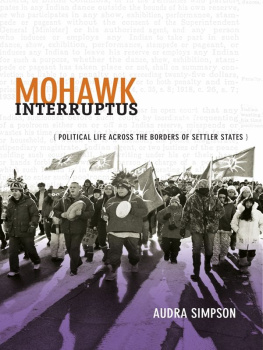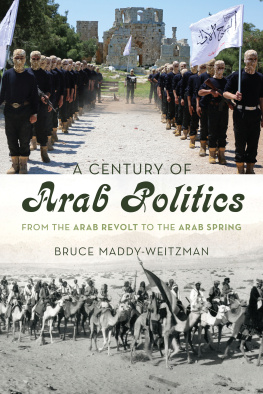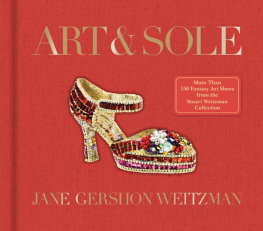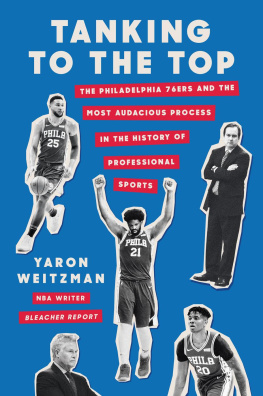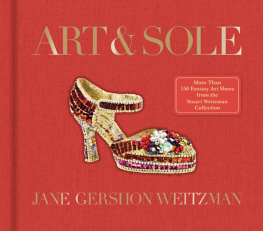CONTENTS
Guide
SKYWALKERS
MOHAWK IRONWORKERS BUILD THE CITY
David Weitzman

Roaring Brook Press
New York
The author and publisher have provided this e-book to you for your personal use only. You may not make this e-book publicly available in any way. Copyright infringement is against the law. If you believe the copy of this e-book you are reading infringes on the authors copyright, please notify the publisher at: us.macmillanusa.com/piracy.
To All My Students of the Round Valley Indian Tribes
INTRODUCTION
T wo hundred feet above the city, a new skyscraper slowly climbs toward the sky. A bare skeleton of steel I-beams is being assembled, floor by floor, by ironworkers.
On the street below, the weather is calm. But up here, high winds threaten to topple the workers. A sudden gust can knock them from their footing with its sheer force or send a fatal vibration through the beams on which they stand. And yet the men joke, laugh, stroll across the foot-wide beams as though they are on solid ground. To the people on the sidewalk, tiny as ants below, the skywalkers appear entirely unafraid. A hundred years ago, their grandfathers and great-grandfathers built the skyscrapers and bridges that surround them. Hundreds of years before that, their ancestors walked the rooflines of longhouses.
They are Mohawk Indians, and the story that led them from the longhouse villages to the urban landscape is part of a tradition stretching back thousands of years. But it is also the story of the American city. Of a moment when the cityscape, once built of wood, brick, and stone, found steel and reached for the sky.
For centuries, the tallest buildings were barely nine stories tall. But at the beginning of the twentieth century, engineers, such as John Roebling and James Eads, and architects, such as Louis Sullivan and Daniel Burnham, raced to design longer bridges and taller buildings. Americans were as familiar with these names as we are with the inventors of new Web and computer technology today. But, as is true in every age, mostly unsung workers toiled at the edge of the possible to construct the bridges and buildings those visionaries designed.

Ironworkers Jay Jacobs (foreground) and Sparky Rice working on a steel beam. The national flag is always placed at the highest point on the building.
Among those who climbed high up into the iron and steel girders of bridges and skyscrapers to work in this new frontier were Mohawk Indians. Most of them came from communities in CanadaKahnawake, Akwesasne, and Six Nations of the Grand River.
Performing dangerous work several hundred, if not several thousand, feet up in the air requires amazing concentration, courage, and gritthe very qualities the Mohawks would ascribe to their ancestors throughout their long history. That tradition continues today with the hundreds of Mohawk ironworkers on one-hundred-plus-story skyscrapers and mile-long bridges going up all over the world.

Mohawk ironworkers on the United Nations Building, completed in 1950. From left to right: Angus Mitchell, Joe Jocks, and unidentified worker.
PEOPLE OF THE FLINT
We had a reputation as rivermen and ironworking was a different
kind of work. We didnt have the tools or traditional skills to
fall back onit was our introduction to the industrial age.
Conway Jocks, Kannawake ironworker
T o be accurate, they are not really Mohawks. The Indians of southern New England called the tribe the Mohowawogs, which means man-eatersand by all accounts they did eat some of their captives taken in war. Early Dutch and English explorers heard the word as Mohawks. The tribe calls themselves the KanienkhakaPeople of the Flint. (The k is pronounced like our g.) But for 400 years now, since the arrival of the Europeans, Mohawks is what they have been called, and though they may not refer to themselves that way, they do not mind if others do.
The origins of the people are lost in time, but the plentiful archaeological record around upstate New York goes back at least 4,000 years. By some estimates, ancestors of modern-day Mohawks lived on the same land as long as 12,000 years ago.
From the beginning, the Mohawks were a people who fostered cooperation and community effort. They were leaders in establishing the League of the Iroquois, a confederation of Indian nations in the New York region founded sometime in the 1500s to maintain peace among themselves and with surrounding nations. The names of the original Five Nations describe the lands each inhabited as well as their responsibilities as peacekeepers: Onndowga (Seneca), People of the Great Hill, and Keepers of the Western Door; Guyohkohnyo (Cayuga), People of the Mucky Land; Ondagega (Onondaga), People of the Mountains; Onyotaa:ka (Oneida), People of the Granite; and Kanienkhaka (Mohawk), People of the Flint, and Keepers of the Eastern Door. Later, the Tuscarora, Shirt Wearing People, were invited to join the confederation, making it Six Nations. The coming together of six nations to form a confederation in the spirit of peace and mutual protection at this early date was, in the view of Dr. Robert Muller, an Assistant Secretary General of the United Nations, perhaps the oldest effort for disarmament in world history.
So successful were the laws and treaties that held together the Grand Council of the United Haudenosaunee (or Iroquois) that many of its ideas were adopted by Americas founding fathers. But not all of them; in some ways the laws of the Iroquois Confederacy were surprisingly progressive when compared to the laws of the United States. While Iroquois women from earliest times participated at all levels of the government, from the village councils up to the Grand Council, the Constitution did not even give American women the right to vote. It was well over a century before women were granted this right. And even then, many decades passed before American women were elected to office.
Americans were impressed not only with Mohawk institutions but also their respectful attitude toward each other. Joseph Bloomfield, a soldier of the Revolution and, later, Governor of New Jersey, left this account of the Mohawks meeting in council.
The Character of the Indians is striking. They are grave even to sadness, upon any serious Occasion; observant of those in Company, respectful to the old, of a temper cool and deliberate, by which they are never in haste to speak before they have thought well on the matter & are sure the person who spoke before them has finished all he had to say.
Nothing is more edifying than their behavior in their public Councils & Assemblies; every man there is heard in his turn, According to his Years, Wisdom, or service to his Country, have ranked him. Not a Word, not a Whisper, not a murmur is heard from the rest, whilst He speaks; no indecent condemnation, no ill-timed applause.
Like most ancient cultures, the Mohawks had no formal system of writing. Their history and traditions were passed down from generation to generation through the spoken word. During the winter months, as storms raged outside, the village storyteller would gather the children around the warmth of the longhouse fire and, accompanied by the crackling, sputtering flames and the flickering shadows, entertain them with exciting tales of their ancestors. The children sat entranced as the storytellers voice went from a whisper to shouts and cries. With flailing arms and great leaps, he would reenact battles of men and gods and then, just as suddenly, drop to an almost inaudible hush again. As the children grew up, sitting winter after winter around the storytellers fire, they learned about the Great Spirit and the origins of the people, animals, plants, and the world itself. They learned their customs, proper behavior, and their eventual roles as men and women. And they were expected to learn all this by heart so that they could tell the stories to

